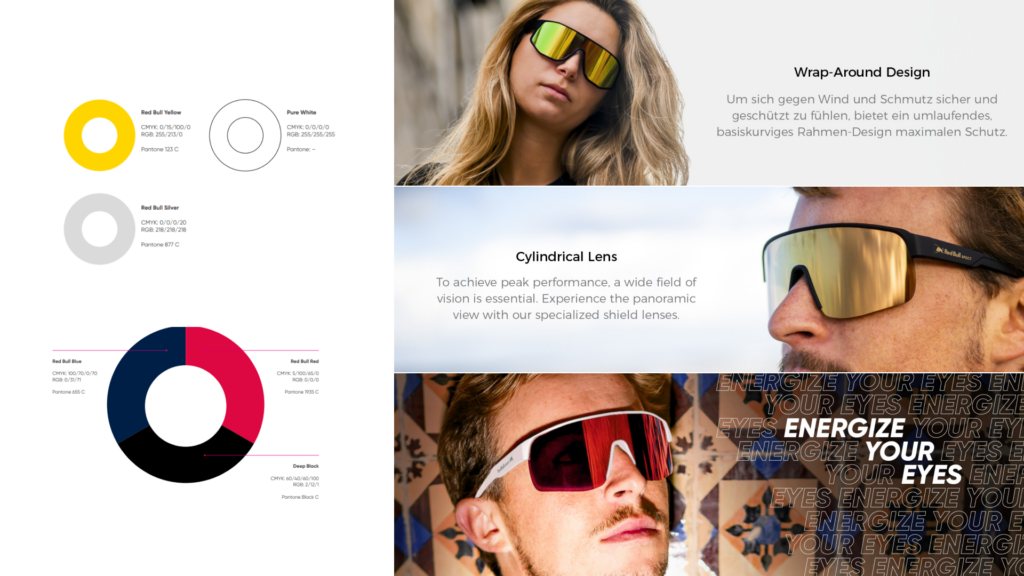
Master Topic:
Optimizing Design Strategies and Interactive Media to improve User Experience: A Case Study in the Eyewear Industry.
Nowadays, standing out is more important than ever. One of the most effective ways to differentiate a brand is through its visual identity. Colors and a sense of playfulness can play a crucial role in building a strong and memorable brand identity. In this post I would like to explore the importance of these elements and how they can enhance UX and brand perception.
The Power of Color in Branding
1. Emotional Connection:
- Colors evoke emotions and can create a powerful connection with the audience. Different colors elicit different feelings; for example, blue can instill a sense of trust and calm, while red can evoke excitement and urgency.
- Example: Think about the calming effect of blue in the branding of tech companies, which aim to create a trustworthy and reliable image.
2. Brand Recognition:
- Consistent use of color can significantly enhance brand recognition. A study by the University of Loyola, Maryland, found that color increases brand recognition by up to 80%.
- Example: The distinctive red and yellow colors of McDonald’s are instantly recognizable worldwide.
3. Cultural Significance:
- Understanding the cultural significance of colors is crucial for global brands. Colors can have different meanings in different cultures, so it’s important to choose colors that align with the brand’s values and the cultural context of its audience.
- Example: In Western cultures, white is often associated with purity and weddings, while in some Eastern cultures, it is associated with mourning.
The Role of Playfulness in Brand Identity
1. Humanizing the Brand:
- Playfulness can make a brand feel more human and relatable. It adds a layer of personality that can differentiate the brand from more serious competitors.
- Example: The playful tone and quirky mascots of brands like Mailchimp and Slack make them more approachable and memorable.
2. Enhancing User Engagement:
- Playful elements in branding can increase user engagement. Interactive and fun features on a website or app can make the user experience more enjoyable and encourage longer interaction times.
- Example: Duolingo’s use of gamification and a playful owl mascot helps keep users motivated and engaged in language learning.
3. Encouraging Brand Loyalty:
- A playful brand identity can create a positive emotional response, fostering loyalty and repeat engagement. Users are more likely to return to a brand that makes them feel good.
- Example: Innocent Drinks uses playful language and whimsical designs on their packaging, creating a fun and friendly image that resonates with their audience.
The current design style of Redbull eyewear wasn’t really following the brand identity….

My idea was to restore Redbull Spect’s vibrant colors, along with the playfulness and craziness the brand is known for.

Let’s see how it turned out in future posts!